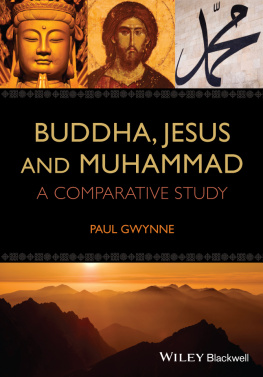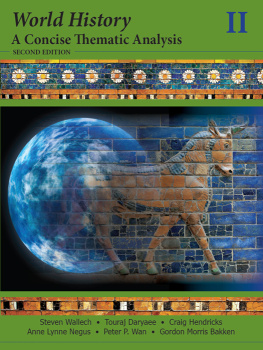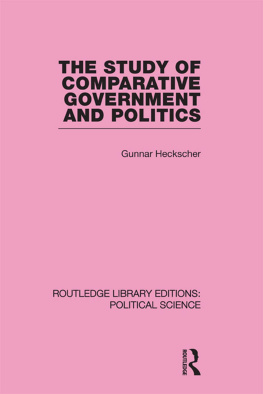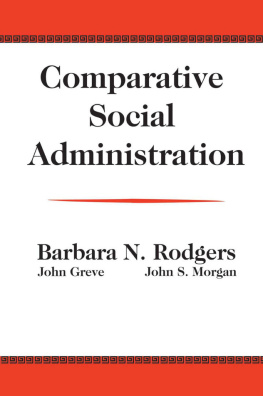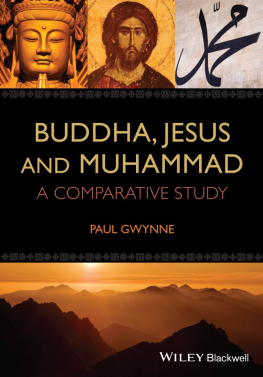
Table of Contents
This edition first published 2014
2014 John Wiley & Sons, Ltd
Registered Office
John Wiley & Sons, Ltd, The Atrium, Southern Gate, Chichester, West Sussex, PO19 8SQ, UK
Editorial Offices
350 Main Street, Malden, MA 02148-5020, USA
9600 Garsington Road, Oxford, OX4 2DQ, UK
The Atrium, Southern Gate, Chichester, West Sussex, PO19 8SQ, UK
For details of our global editorial offices, for customer services, and for information about how to apply for permission to reuse the copyright material in this book please see our website at www.wiley.com/wiley-blackwell.
The right of Paul Gwynne to be identified as the author of this work has been asserted in accordance with the UK Copyright, Designs and Patents Act 1988.
All rights reserved. No part of this publication may be reproduced, stored in a retrieval system, or transmitted, in any form or by any means, electronic, mechanical, photocopying, recording or otherwise, except as permitted by the UK Copyright, Designs and Patents Act 1988, without the prior permission of the publisher.
Wiley also publishes its books in a variety of electronic formats. Some content that appears in print may not be available in electronic books.
Designations used by companies to distinguish their products are often claimed as trademarks. All brand names and product names used in this book are trade names, service marks, trademarks or registered trademarks of their respective owners. The publisher is not associated with any product or vendor mentioned in this book.
Limit of Liability/Disclaimer of Warranty: While the publisher and author have used their best efforts in preparing this book, they make no representations or warranties with respect to the accuracy or completeness of the contents of this book and specifically disclaim any implied warranties of merchantability or fitness for a particular purpose. It is sold on the understanding that the publisher is not engaged in rendering professional services and neither the publisher nor the author shall be liable for damages arising herefrom. If professional advice or other expert assistance is required, the services of a competent professional should be sought.
Library of Congress Cataloging-in-Publication Data applied for
Hardback ISBN: 978-1-118-46551-6
Paperback ISBN: 978-1-118-46550-9
A catalogue record for this book is available from the British Library.
Cover image: Top LR: buddha naphat/ Shutterstock, Christ icon tlegend / Shutterstock, name of prophet muhammad numbeos/iStockphoto, Middle: oriental patterns emirsimsek/iStockphoto, floral design set paul_june/iStockphoto, religious cross collection Negrot/iStockphoto, Bottom: Slovakia sunset mountains Ventura / Shutterstock
Cover design by www.simonlevyassociates.co.uk
For Noel, Colin and their families.
Preface
Toward the end of the popular 1971 musical Jesus Christ Superstar, there is a song in which Judas interrogates a condemned Jesus about his personal motives and self-understanding. In the second verse Judas asks:
Tell me what you think about your friends at the top.
Now who d'you think besides yourself was the pick of the crop?
Buddha was he where it's at, is he where you are?
Could Muhammad move a mountain or was that just PR?
Lyricist Tim Rice's choice of Buddha and Muhammad as peers of Jesus at the top is instructive. In the popular imagination, these three are commonly seen to be the most prominent figures in religious history, and this perception is not without reason or solid grounding. In terms of hard statistics, they stand at the head of three major religious traditions, which together boast approximately 3.5 billion adherents approximately half of the entire human race today. Moreover, it is not only about sheer numbers but also about extent in space and time. Buddhism, Christianity and Islam have been missionary movements from the very beginning and, consequently, their membership is now spread across the continents and islands of the world. They are truly global religions, having penetrated and changed thousands of local and regional cultures. In addition, the influence of Buddha, Jesus and Muhammad stretches back centuries, indeed millennia, to the times in which they lived. Countless generations of human beings have found their inspiration, shaped their behavior, and oriented their lives according to the words and deeds of these three men. Their powerful and widespread influence cuts across both geography and history. Therefore, it is no coincidence that they are often also included in more general lists (covering all domains of human enterprise and activity) of the most influential persons who have ever lived.
This book is an attempt to look at these three crucial lives, not in splendid isolation, but in a comparative manner. Needless to say, there already exists an enormous volume of biographical studies on Buddha, Jesus and Muhammad, dating from the earliest times to the current day. In the past century alone, hundreds of attempts have been made to revisit, reexamine and reinterpret their stories, often inspired by fresh discoveries in the fields of archaeology and ancient history or new developments in philosophy and theology. The sheer number of these biographies makes genuinely original contributions more and more difficult. Yet somewhat surprisingly, there have been very few works of an explicitly comparative nature. While the individual stories of Buddha, Jesus and Muhammad have been told and retold innumerable times, on very few occasions have they been told side-by-side. When a comparative study of the founders has been produced, invariably it involves a comparison of Jesus with either Buddha or Muhammad but rarely all three. While Hilliard explicitly acknowledged his Christian bias, the Rivers of Paradise project was more objective, involving multiple authors from respective religious traditions. However, it was inherently restricted by its highly specific theme: namely, the extent to which each of the five figures conformed to Max Weber's definition of a prophet. Such a dearth of literature in this area suggests that there is a serious scholarly gap that needs to be filled.
In order to achieve our aim, we have adopted a threefold approach: phenomenological, comparative and thematic. First, a phenomenological methodology will be used. Although absolute impartiality is an unrealistic ideal in any discipline, nevertheless, it is possible to set aside ideological concerns and to strive for a reasonable level of objectivity. Consequently, this book is not primarily concerned with the veracity or credibility of the claims of each founder or their religious tradition. Nor is it aimed at demonstrating the ascendancy or preeminence of one vis--vis the others, as was often the case in earlier forms of comparative religion. In this sense, our study is more interested in observation and description than judgment and proof. While it certainly seeks to compare the three figures in a fruitful manner, it does not seek to compare one of them favorably against the others. For this reason, the book may disappoint some Buddhists, Christians and Muslims who are convinced that their religious hero stands indisputably head and shoulders above the other two, and that any comparison should bear this out.
Second, the book will unpack the elements of each story within a comparative framework. In other words, the three lives are set alongside each other and that juxtaposition, by its very nature, casts different shades of light on them. This is the peculiar contribution of the comparative method. It highlights aspects that are easily taken for granted or entirely missed otherwise. It reveals both common elements and truly distinctive features. Thus, as the comparison unveils areas of similarity and difference, it simultaneously places the subject more firmly within its proper context and reinforces its undeniable uniqueness. Hopefully, this comparison will uncover hitherto unsuspected or underestimated links between Buddha, Jesus and Muhammad, but at the same time identify what makes each of them stand alone as an incomparable individual. Thus, it is important to ensure that genuine likenesses and differences are protected. It must navigate its way between the Scylla of artificial similarity and the Charybdis of utter uniqueness. As a result, this book may disappoint those whose tenet is that all religious founders are essentially the same, as well as those whose tenet is that these three have nothing in common.
Next page
